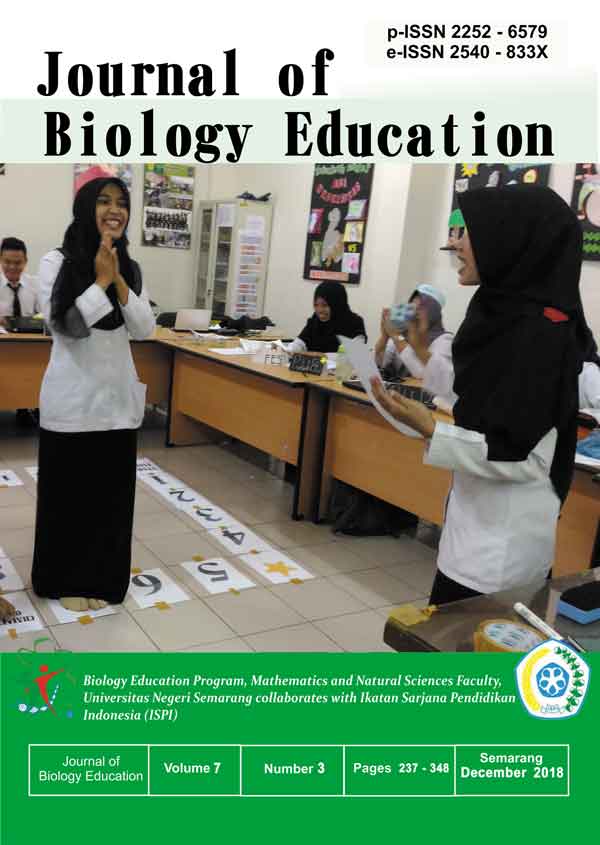The Development of Ectofishpedia as a Learning Supplement on Aquaculture Activity
Abstract
The observation's result at SMK Negeri 4 Kendal on students of the Freshwater Fisheries Agribusiness department and Water Quality and Pest Disease teachers has revealed that 89.1% of students found it difficult to find ectoparasites during practicum because of limited material samples, time, and also limited images of ectoparasites on commonly used teaching materials. The 2013 curriculum requires students to be able to learn from various learning sources, and teachers are required to be more creative in developing learning media. The observations are also made on fish breeders in the Muncul area of Semarang Regency. It is known that fish farmers do not understand fish ectoparasites, their symptoms and proper handling. Based on the results of these observations, the need for a media that can help students learn ectoparasites and a medium that can help fish farmers in overcoming ectoparasites in fish, so the Ectofishpedia is developed. Ectofishpedia is made based on ectoparasitic observations at BKIPM Semarang and literature studies. This study aims to determine the validity of Ectofishpedia, the feasibility of Ectofishpedia as a supplement for teaching materials, and the feasibility of Ectofishpedia for use by fish farmers. This study uses the R&D method by Sugiyono (2013). The validity assessment by material experts obtain a percentage score of 88.74%, and by media experts 98.75% with very valid criteria. The feasibility assessment by the teacher obtained a score score of 86.45% and 85.05% by students with very appropriate criteria. The feasibility assessment by fish farmers obtained a score of 83% with very appropriate criteria. The results of this study indicate that Ectofishpedia is valid and appropriate to use as a supplement for teaching materials for pest and disease materials and is suitable for use by fish farmers.
The copyright of the article once it is accepted for publication shall be assigned to the journal as the publisher. The intended copyright includes the right to publish the article in various forms (including reprints). The journal maintains the publishing rights to the published articles.
This work is licensed under a Creative Commons Attribution 4.0 International License.








